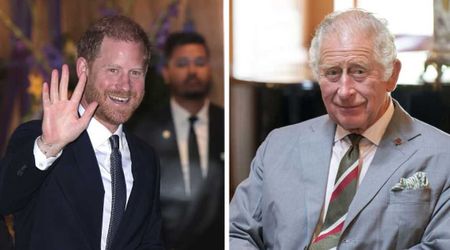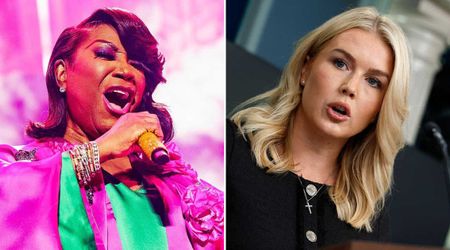Top 10 logos that defined the Olympic Games: From Tokyo 1964 to Moscow 1980

A look back at the 10 most memorable Olympic logos

In just three days the Paris Olympic Games will kick start with all its glory. While Paris is decking up to host hundreds of athletes and thousands of spectators, the city has been bejewelled with the 2024 Olympic emblem. Such is the power of an Olympic logo as the tiny pictogram encapsulates the essence of the game along with the spirit of the hosting nation. Throughout the history, there have been several such Olympic logos which withstood the test of time and have emerged as major pop culture icons. Here are 10 such Olympic logos that defined the historic international multi-sport event.
1. Tokyo 1964

For the 1964 Olympic Games, Japan produced a simple yet impactful emblem. While the giant red circle was considered by many as the symbol of the Japanese flag, in reality, it carried more significance. The red circle stood for the rising sun that symbolized Japan's reinvention of the nation after the Second World War. The emblem was designed by artists Yusaku Kamekura and Masaru Katsumi. Kamekura once explained, per Fast Company, "People may have considered that this large red circle represented the hinomaru [Japanese National Flag], but my actual intention was to express the sun. I wanted to create a fresh and vivid image through a balance between the large red circle and the five-ring Olympic mark." If you notice closely, while the five rings look similar to the age-old Olympic symbol, it it rather an elevated version. With the rings interwined in a complex manner, the rings not only gives a three-dimensional effect but also comes out as a balanced icon.
2. Mexico City 1968

When Mexico City took the responsibility of hosting the Olympics in 1968, they produced a simple yet culturally reflective emblem. Their emblem consisted the name of host country, the year of the games, and the five Olympic rings. It was the brainchild of three artists, Pedro Ramirez Vazquez, architect and President of the Organising Committee for the Games, Eduardo Terrazas (MEX), and Lance Wyman (USA), as per the Olympics.com. The emblem also gives a tribute to the patterns of the Huichol, an Indigenous people of Mexico. According to Creative Bloq, Olympic Commitee chairman Vazquez asked Wyman's team to "create an image showing that the games are in Mexico, that isn’t an image of a Mexican wearing a sombrero sleeping under a cactus." The final product ultimately came out to be a celebration of the amalgamation of modernity and traditionalism without trying too hard.
3. Munich 1972

While 1972 Munich Olympics will forever be remembered in history for its tragedy, its emblem will be etched in history for a completely different reason. As per the official Olympic website, the logo "represents a crown of rays of light, a design symbolizing the spirit of the Munich Games—light, freshness, generosity—expressed by the design 'Radiant Munich.'" The design created by artist Otl Aicher was almost hypnotising and represented a ray of hope for Germany which was also trying to rise from the ashes of the Second World War. However, it was also one of the only two Olympic logos so far to avoid integrating the rings in the main emblem, along with avoiding a clear mark of the nation hosting the event.
4. Montreal 1976

Four years later when Montreal hosted the Olympics, they took a completely different approach in their logo. The 1976 Montreal logo deserves a special mention because of it seamless incorporations of the five Olympic rings which were elongated to mimic the Canadian symbol of maple leaf. Moreover, the interplay of red and white paid a special tribute to the Canadian flag. Designed by Georges Huel, the logo "is made up of the Olympic rings mounted on an Olympic podium, which is also the graphic interpretation of the letter M, the initial of Montreal. In the centre, the athletics track, the focal point of the Games."
5. Moscow 1980

At the peak of the Cold War, two feuding nations of USSR and USA took up the responsibility of hosting the Olympics. The then Soviet Russia thus produced a patriotic emblem that was at once a tribute to Kremlin along with acknowledging the modern nation that it was emerging to be. The emblem, created by Russian artist Vladimir Arsentyev, honored the architecture of post-war Moscow. It also encapsulated the essence of the games, where athletes from all over the world came to achieve their coveted success, as per Ceros.
6. Los Angeles 1984

Similar to its predecessor, the symbol of the 1984 Los Angeles Olympics was equally patriotic. According to the Olympics website, "The star is a universal symbol of the highest aspirations of mankind; the horizontal bars portray the speed with which the contestants pursue the excellence, while the repetition of the star shape connotes the spirit of competition between equally outstanding physical forms. The symbol colours— blue, white and red—were in part chosen for their traditional significance in the awarding of prizes for first, second and third place." The logo designed by Robert Miles Runyan & Associates, thus, perfectly incorporated the American values with the principles of Olympic games.
7. Athens 2004

The 2004 Olympic Games in Athens was the first time that the historic games returned to its birth place. Quite significantly, the symbol consisted of "a wreath made from an olive tree branch, or kotinos." The Kotinos were awarded to the champions of the ancient Olympic Games. The blue and white color scheme of the logo similarly represented not only the flag of the nation but also the color schemes found in Greek countrysides. The design was created by Wolff Olins and Greek partners Red Design, who stood out from the other emblems because of their unique hand-painted nature of the design.
8. Beijing 2008

For the 2008 Olympic Games, Beijing went with a logo based on traditional Chinese elements. Per the Olympics website, "The official emblem of Beijing 2008 entitled 'Chinese Seal-Dancing Beijing' cleverly combines the Chinese seal and the art of calligraphy with sporting features, transforming the elements into a human figure running forward and embracing triumph. The figure resembles the Chinese character 'Jing,' which stands for the name of the host city and represents a particularly significant Chinese style. The artwork embodies four messages: Chinese culture, the color of red China, Beijing welcomes friends from all over the world, to challenge the extreme and achieve perfection and promote the Olympic motto of 'Citius, Altius, Fortius' (Faster, Higher, Stronger)." The logo also symbolized the exuberance of a runner at the finishing line, thus incorporating the idea associated with achiebing success.
9. Tokyo 2020

After becoming smash hit in their 1964 edition, in 2020, Japan introduced another artistic emblem for the 2020 edition of the Olympic Games. For the logo, they incorporated the chequered pattern known as "Ichimatsu-Moyo," famous in the country in the Edo Period (1603-1867). Instead of red, this time they chose the color blue, symbolizing elegance. According the Olympics website, the emblem is "composed of three varieties of rectangular shapes, the design represents different countries, cultures and ways of thinking. It incorporates the message of 'Unity in Diversity.' It also expresses the fact that the Olympic and Paralympic Games seek to promote diversity as a platform to connect the world." The futusistic design also goes with the collective image associated with the island nation, making the emblem quite memorable.
10. Paris 2024

The French, known for their creativity and incorporating shock factor to artworks, did the same with the emblem of the 2024 Paris Olympics. While they used the image of the Olympic torch, they juxtaposed it with a feminine face (which many fans found similar to Rachel from 'FRIENDS'). While the 2024 Summer Olympics is yet to begin and we still have to wait for another few years to see whether the emblem passes the test of time, as of now, the logo has successfully captured the liking of the present generation with its fresh perspective.










